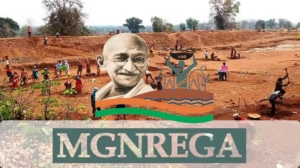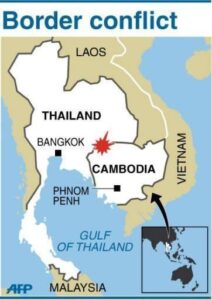Stryker Infantry Combat Vehicle and Potential Co-Production in India
Introduction
The Stryker Infantry Combat Vehicle (ICV) is an advanced, highly mobile, and combat-proven platform used by the United States Army. Developed by General Dynamics Land Systems (GDLS), it is a versatile, wheeled armored vehicle that bridges the gap between light and heavy forces, offering a blend of mobility, survivability, and firepower. With India actively seeking to modernize its armored vehicle fleet, discussions surrounding co-production of the Stryker in India have gained momentum.
Overview of the Stryker Infantry Combat Vehicle
The Stryker is an 8×8 wheeled armored vehicle designed to enhance battlefield maneuverability while providing effective protection and offensive capabilities. It is derived from the Canadian LAV III, which in turn is based on the Swiss MOWAG Piranha. The U.S. Army has widely deployed the Stryker in various combat operations, including Iraq and Afghanistan.
Key Features:
Modular Design: The Stryker can be configured into multiple variants, including Infantry Carrier, Mobile Gun System, Anti-Tank Guided Missile (ATGM) carrier, and Command Vehicle.
Enhanced Protection: It features composite armor, an optional Double-V Hull (DVH) design for enhanced mine resistance, and active protection systems.
High Mobility: The vehicle can reach speeds up to 100 km/h and has a range of approximately 500 km.
Advanced Weaponry: It is equipped with a Remote Weapon Station (RWS), which can mount a .50-caliber M2 machine gun, 40mm automatic grenade launcher, or Javelin missile system.
Digital Battlefield Integration: Equipped with network-centric communication systems, the Stryker enhances situational awareness and coordination among forces.
The Case for Co-Production in India
India has been working on modernizing its armored fleet, focusing on indigenization, mobility, and multi-role capability. The potential co-production of the Stryker in India aligns with several strategic and economic objectives, including the ‘Make in India’ initiative and the drive for self-reliance in defense manufacturing.
Strategic Benefits for India:
Strengthening India-U.S. Defense Ties: Co-producing the Stryker would further enhance the India-U.S. defense partnership, which has seen increasing collaboration through agreements such as COMCASA and BECA.
Modernization of Mechanized Infantry: India’s mechanized infantry is currently reliant on BMP-2 vehicles, which are aging and require replacement. The Stryker offers a state-of-the-art alternative.
Enhanced Operational Capabilities: With its high mobility and advanced protection, the Stryker is well-suited for India’s diverse operational environments, including plains, deserts, and mountainous regions.
Adaptability for Indian Needs: The Stryker can be modified to integrate Indian weapon systems, sensors, and communication suites, making it a customized solution for the Indian Army.
Economic and Industrial Advantages:
Boost to Indian Defense Industry: Collaborating with GDLS would facilitate technology transfer, benefiting Indian manufacturers such as DRDO, OFB, and private defense firms like Tata and L&T.
Job Creation and Skill Development: Establishing local production lines would create jobs in manufacturing, R&D, and maintenance.
Potential for Export: By producing the Stryker in India, there is a possibility of exporting to friendly nations, further strengthening India’s role as a global defense hub.
Challenges and Considerations
While the prospects of co-producing the Stryker in India are promising, several challenges must be addressed:
Cost and Affordability: The Stryker is an advanced platform, and production costs must be balanced to ensure it is an economically viable solution.
Technology Transfer Agreements: The level of technology transfer and indigenous component integration must be negotiated carefully.
Infrastructure Development: Setting up new production lines and supply chains would require significant investment in infrastructure.
Competition with Indigenous Projects: India is also developing its own Future Infantry Combat Vehicle (FICV) program, which may influence the decision to co-produce the Stryker.
Conclusion
The Stryker Infantry Combat Vehicle represents a modern, versatile, and battle-proven platform that could significantly enhance the Indian Army’s capabilities. Co-production with the U.S. and General Dynamics Land Systems offers multiple benefits, including technological advancement, industrial growth, and strategic cooperation. However, India must carefully weigh the economic, strategic, and operational factors before committing to such a program. If executed effectively, co-producing the Stryker could be a game-changer for India’s armored vehicle modernization efforts and the broader defense industry.






